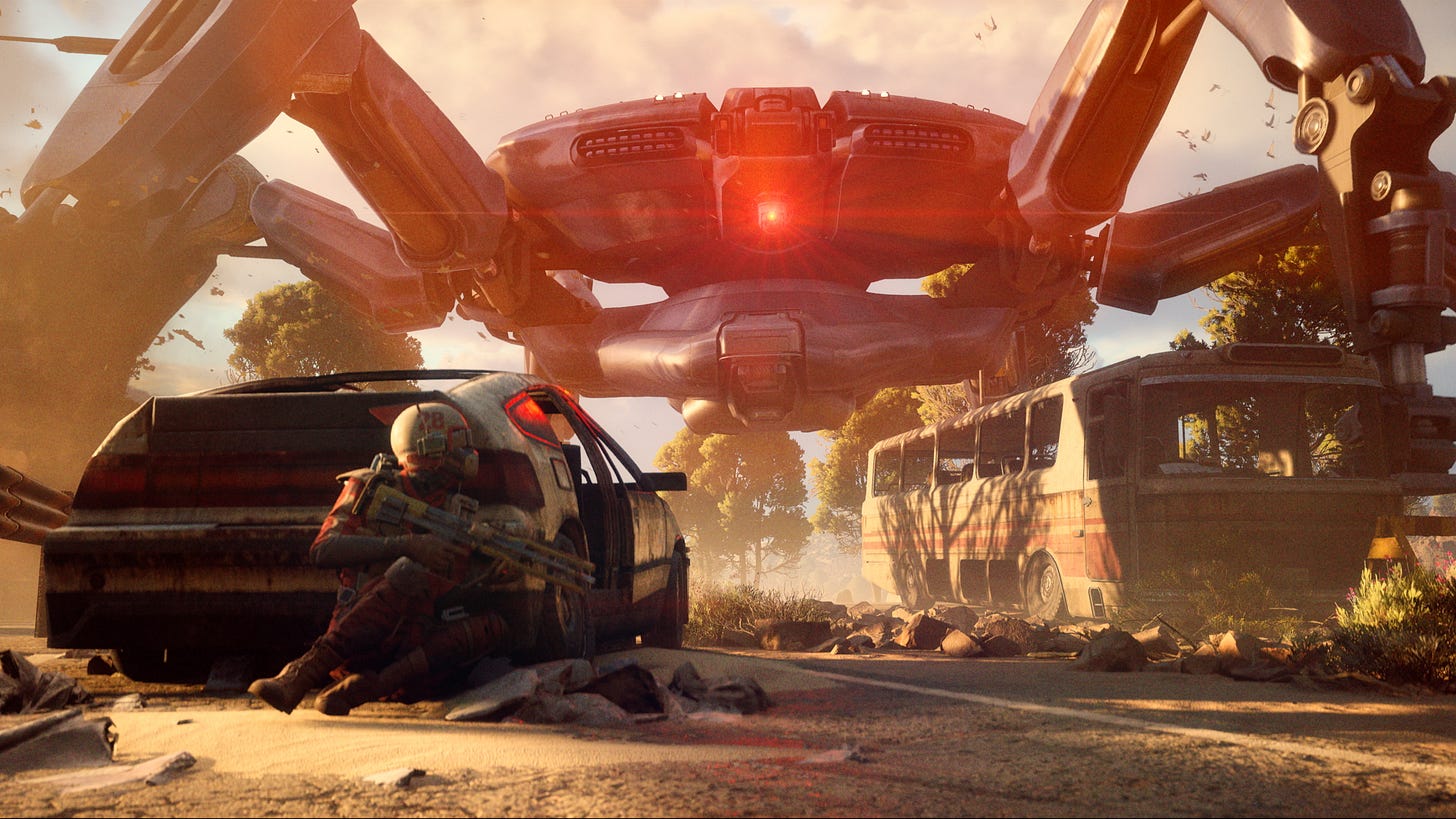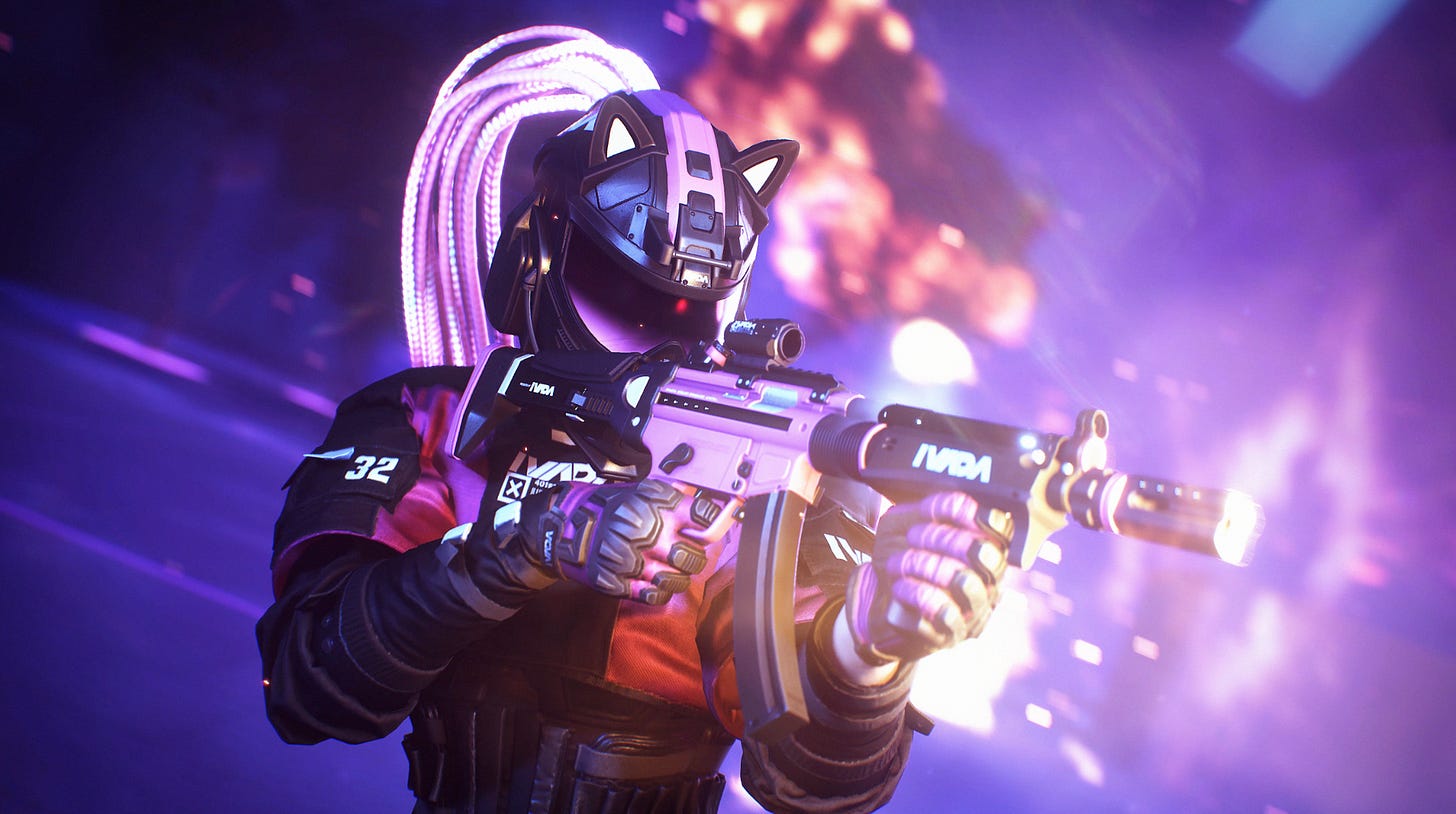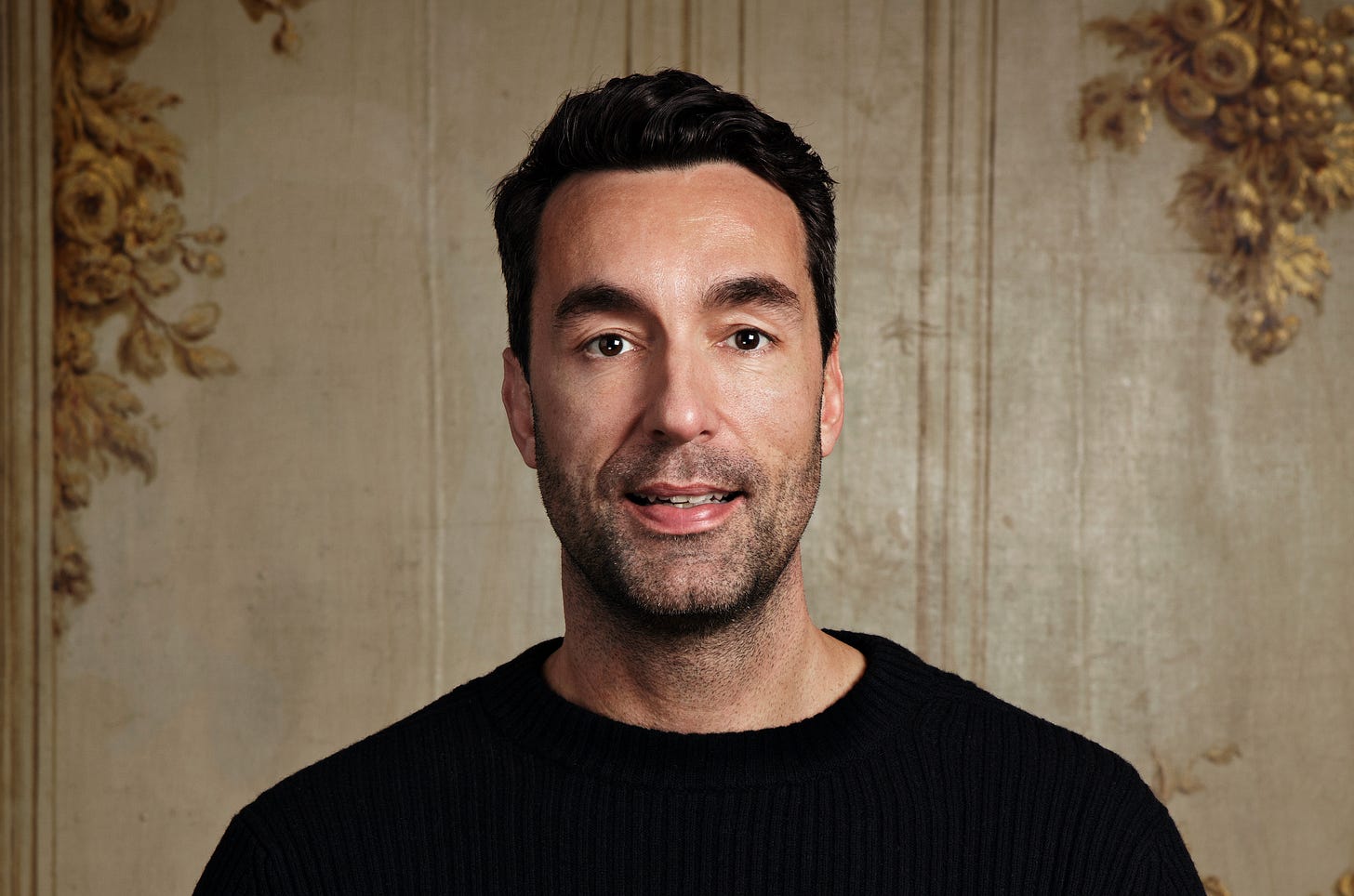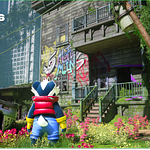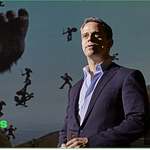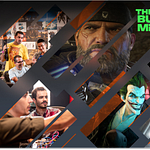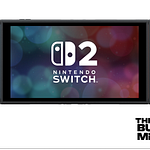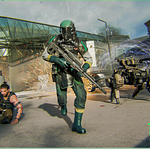Listen now on Apple, Spotify or YouTube
In This Edition
Embark’s Patrick Soderlund on…
- Arc Raiders’ big pre-release numbers
- The rise, fall and return of The Finals
- Making games 100x faster
There was one question on my mind when I spoke to Embark Studios last week: How?
If you don’t know Embark, they’re a Swedish game developer formed in 2018 by Patrick Soderlund, a man best known for running EA’s global studios, and working across the Battlefield series.
Embark released its first game The Finals in 2023 (we’ll come back to that). And this week it will release another new IP, the extraction shooter Arc Raiders. It’s a game that finds itself coming out between the two biggest shooters of the year, Battlefield 6 and Call of Duty: Black Ops 7.
“I know. The insanity,” quips Soderlund. “People may look at that and say, ‘what the hell are they doing?’ We have spent a lot of time looking at this from multiple angles and you know, for right or wrong, we believe that the game can launch there. This is the start of a long journey. It needs to start somewhere.”
On paper, it sounds like a potential disaster. Arc Raiders is a new IP in a relatively niche sub-genre going up against two of the biggest shooter juggernauts imaginable. But… it’s doing well. Very well. It is currently the third most Wishlisted game on Steam. And its last technical test drew in 190,000 players.
So that leads me to my big question: How?
“I had this conversation the other day, but I couldn’t give a good answer,” Soderlund tells me.
“I think it comes down to not being complacent enough to believe that we can build something without making a meaningful impact or innovation. We have to bring something so that people pay attention. And if we’ve done a good enough job, maybe they’ll stick around. But in order for them to break away from what they’re already playing, there needs to be an attraction.
“A couple of years ago, I was concerned about Arc Raiders and whether it would find its market. So, when we launched the technical test, which was earlier in the spring, we were just blown away by how many people played it. We obviously tried our best to market it, but it became one of those things that just spread virally. We were humbled by that. It’s testament to the work that the team has done building something that is complicated, yet accessible. Something that is easy to play, yet has a lot of gameplay depth.”
“Someone needs to dare to say what is uncomfortable”
The story of Arc Raiders isn’t a straight line. The game was announced before The Finals (we’re still coming back to that) in 2021. Back then it was a co-operative action game that used “deep innovations in artificial intelligence”. After years of making competitive shooters, Embark were looking to do something a bit different.
But something wasn’t right.
“You would have amazing moments, and you’d be like ‘nailed it, high five’. And then you would play for four hours straight, and it was just not fun,” Soderlund remembers. “Some of [the sessions] were even painfully bad.”
Eventually Soderlund said the thing everyone knew: for all its cool ideas, Arc Raiders wasn’t a good game.
“We should have come to that conclusion earlier,” he admits.
“It wasn’t a lack of trying. The dev team really tried. But it just wasn’t there.”
He adds: “Someone needs to dare to say what is uncomfortable. That’s how I look at myself. I’m the guy that needs to point out the things that are uncomfortable. And then I can maybe guide people towards a direction, but ultimately, they’re the ones that have to figure it out.”
The team was fond of Arc Raiders’ sci-fi retro aesthetic and the world it had built… it just needed a different game. And the game it came up with was an extraction shooter. For those unfamiliar, extraction games are where players enter a map to collect items or complete objectives, and then try to escape.
This sub-genre has a following, but it can be unforgiving and, as a result, it’s relatively niche.
“You can put up all the data in the world, and you can compare to other games, but at the end of the day, it’s a decision that comes from your gut,” Soderlund says. “Does this feel like a game we can pull off? Can it cure the problems that the previous version had? And do we believe there’s a big enough market out there? We played a ton of extraction games, Escape From Tarkov, The Hunt… and we felt there’s something here. It’s not for everyone, but if we make something that’s more accessible than what’s out there, and a little lighter in how it feels, maybe we could attract players into something like this.”
The rise, collapse and profitability of The Finals
With Arc Raiders going through a redo, Embark decided to build something more familiar in the meantime. Many of the team worked on Battlefield and were eager not to do another competitive shooter… but that changed.
“There’s a reason we built those games for so many years,” Soderlund says. “So, many of us got an itch to explore that segment again.”
The Finals was announced and released during The Game Awards in December 2023. It was a free-to-play competitive shooter and was an immediate hit, with more than 20 million downloads.
Soderlund became addicted to his phone over the Christmas break, obsessively keeping track of the player data. But then something happened. On January 7, the numbers started to decline, and rapidly.
“We thought we had created a monster, but after a month people started doing something else. We lost a massive number of players. We came back and starting thinking… what’s happened? It took us a while to fully understand.”
“We thought we had created a monster, but after a month people started doing something else”
It wasn’t one problem. There wasn’t enough content in the game, the on-boarding wasn’t strong enough, the game modes hadn’t been explained properly, the menus and UI weren’t right. There was no one quick fix to win players back.
With support of its parent company Nexon, Embark went back to the data to work out what to do. But Soderlund says that data “can be your best friend and your worst enemy, because it’s what you do with the data that dictates the outcome.”
“We thought we were lacking a game mode. So, we added something that we thought was awesome called Terminal Attack. We loved it. And I was thinking, ‘everyone is going to come back’. But most people didn’t like it. That was the constant loop we had to go through to get to a place where we made progress.”
Eventually, things improved.
“For six months now, we’ve been on a steady growth trajectory,” Soderlund says. “The game is profitable. We feel good about it. We are planning not months ahead, but years ahead.
“That’s probably a relatively unusual story. A lot of games we’ve seen go through the same thing, unfortunately, cease to exist, especially in the free-to-play market. I’m a little surprised that we managed to [do it]. It doesn’t mean that it will last forever, but it means that we’ve done something right.”
Arc Raiders is different to The Finals. For starters, it’s not free-to-play. The Finals has in-game cosmetics that players can buy, but Arc Raiders doesn’t lend itself well to that model, so the game will cost $40. Nevertheless, there are still lessons from The Finals that are being applied to Arc Raiders.
“Just launching with more content and depth. It’s not necessarily about the number of maps, it’s about how you utilize the content,” Soderlund explains. “The first thing is the second-to-second gameplay, if you don’t nail that, there’s no game. Then it’s about what happens every minute. You need to nail that, too. Those things you can’t negotiate. Unless you have those figured out, no one is going to want to play.
“For The Finals and Arc Raiders, we figured those things out. But then you go into hour-by-hour, then day-by-day, then week-by-week, then month-by-month… that’s where the problems start. You need to make sure you have things for the player to accomplish and a game they want to come back to. A game that punishes you enough, but not too much. That is rewarding, but not too rewarding. That feels fair, but sometimes unfair. That’s the balance.
“I’m not saying we’re going to get it right 100% for Arc Raiders, but the learnings we’ve had [from The Finals] has taught us a lot. And in the cases where we don’t get it right, we’re going to be much quicker to jump on those problems and cure them.”
Making games 100x faster
When Soderlund formed Embark, he went to Rob Runesson, who led the content creation team, and challenged him to find a way to make games ‘ten times faster’.
“We can’t keep up with those Asian live game developers who churn out content,” he told him. “We have to be competitive.”
But Soderlund regretted the suggestion. He shouldn’t have said “ten times faster”, he should have said “100-times faster”.
“If our goal is to do it ten times faster. We’re going to try to fix conventional development methods, and that may lead to us being twice as fast if we do a good job,” he says. “If you ask for 100 times faster, you have to take what you know and throw that away, and start thinking about what type of transformation we need to go through.”
“I do believe that what we have created a way to build games, and update games, that I don’t think many others can compete with”
This is when Embark started looking at procedurally generated content, using AI and machine learning, changing pipelines and building entirely bespoke tools.
“Today, I wouldn’t say we’re 100 times faster than any other studio, that would be arrogant. But I do believe that what we have created a way to build games, and update games, that I don’t think many others can compete with. And it’s because we took that approach. If you come here, you have to learn a bunch of tools that only exist here. You have to go at things in a way that only we’re doing.
“This studio is roughly 300 people and we have two relatively large games in development. One is in a live environment, and we’ve updated The Finals every single week since we launched it. We will have a similar approach to Arc Raiders. We also have other games here that we are developing.
“To do all that, with a medium-sized studio - we’re not small by any means – is because we made those investments early on.”
Soderlund stresses that Embark is not rushing the creative process. He’s talking about automating the more tedious and time-consuming tasks, so the team can spend time on making things, without the costs usually associate with doing so.
“If you look at Arc Raiders… a game that would’ve been in development at a larger publisher for that amount of time would’ve cost hundreds and hundreds and hundreds of millions of dollars,” he explains. “We haven’t spent even close to that. I don’t think people should confuse what we’re trying to accomplish for rushing things or doing them quickly. It’s more about efficiency.”
The unannounced projects that Embark is working on are also live service games. One is “more conventional”, Soderlund says, while the other “has a lot more edge”. But despite working on four projects, there are no plans to grow much beyond the size they are. Instead, the aim is to have a positive impact on the wider game industry.
“I hope we’re seen as pioneers in how to build games in a different way,” he concludes. “I know that might be ambitious, but you have to be ambitious and maybe we’ll get halfway.”
Thank you for reading today’s The Game Business. There is no news/analysis show this Thursday (we’re taking a short break). But we’ll be back to normal next week. See you then!




